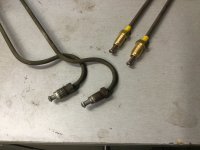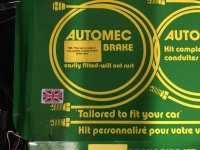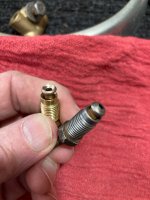nichola
Jedi Hopeful
Offline
Has anyone run into this? The kit has straight pieces the correct length and the threads are correct but they have double flare instead of bubble flare ends. I’m thinking I have to search for adapters or cut the ends off and re-flare them properly. Which means buying a tool. Any suggestions on tools for 3/16 copper? Or other ideas?

 Hi Guest!
Hi Guest!

 smilie in place of the real @
smilie in place of the real @
 Pretty Please - add it to our Events forum(s) and add to the calendar! >>
Pretty Please - add it to our Events forum(s) and add to the calendar! >> 



